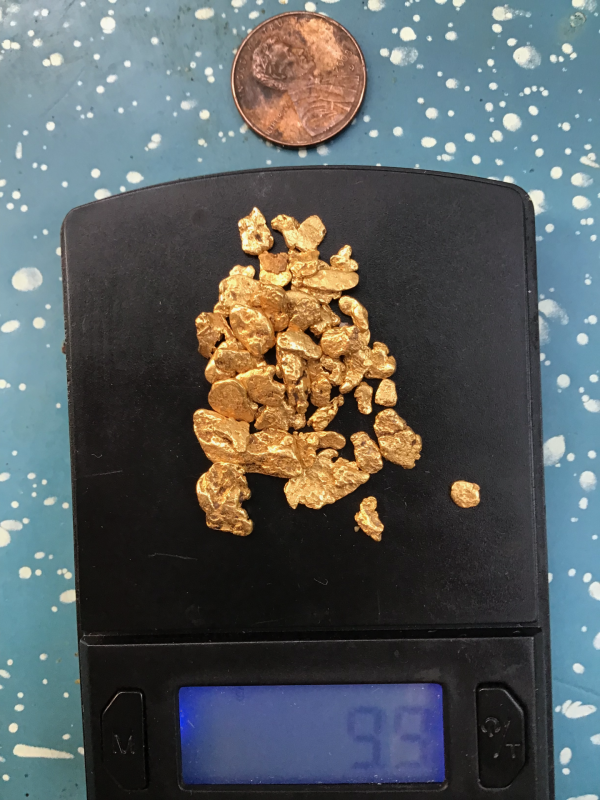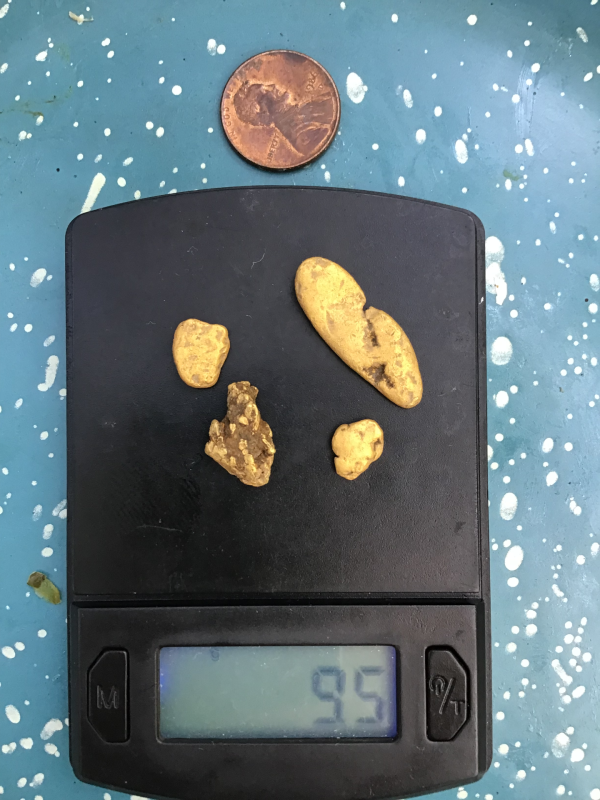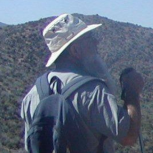-
Posts
137 -
Joined
-
Last visited
Content Type
Forums
Detector Prospector Home
Detector Database
Downloads
Posts posted by oldmancoyote1
-
-
1 hour ago, Clay Diggins said:
California ranks first in the U.S. for agricultural cash receipts. More than 50 billion $$$ a year.
None of that could happen if you couldn't run pumps in or near waterways. There is no law prohibiting the pumping of water or the use of water pumps.
A pump serving a distant mineral processing project would be considered a part of the mining processing machinery. That would be a violation.
-
8 minutes ago, GhostMiner said:
The regulation refers to " mechanized equipment within 300 ft of a waterway." So whatever they determine is mechanized is the key to your question. Outside the 300 ft buffer is no problem at all & you can even get a water license to pump out of the creek as long as your operation is outside the protected area.
I suspect using such a pump would be a violation.
-
Last year after visiting a prolific hydraulic pit many times, I found just a 1 gram piece. My buddy who started swinging wild and loose looking for the big one, has not found gold in two years. The first time we visited this site (4 or 5 years ago), I found 51 pieces is two days and he found 79. Your experience may vary. : )
-
 2
2
-
-
The short answer is DON'T DO IT!
The rule is enforced by the game wardens of the California Department of Fish and Wildlife.
Several years ago I ask the Lieutenant in charge of the my area, Steve McDonald, about a hand cranked trommel. After discussions with his Wardens, his reply was: "If it is not powered by an engine or a motor, it is not a violation." The implication is that if it is so powered, then it would be a violation if there is a running or standing natural water body within 100 yards. Perhaps the issue has been re-addressed after I ask my question. Perhaps an intermittent creek is an issue. I do not know! The law clearly addresses processing material. It doesn't matter if you are connected to an actual water body.
I had further email conversation with the Central California Regional Water Quality Control Board personal about a waver for the rule in a similar harmless situation. While my discussion was exceptionally polite, the answer was a rude verbal slap in the face. NO in two paragraphs of capital letters.
What you anticipate is a very bad idea.
Sorry.
-
I use hill shade maps made from lidar data. You can use them with the USGS National Advanced Viewer. I also use OnX with an Apple iPod Touch and an external GPS device.
-
13 hours ago, Steve Herschbach said:
The bare basics of PI is the pulse delay. VLF is called Frequency Domain because it is frequency based. Pulse Induction is called Time Domain because it is time based. VLF
...
Great bunch of posts Steve. I've saved them. It'll take at least the rest of winter to absorb it. Thanks
-
Detector settings are sometimes called timings. Why? How can thinking about timings help me configure my detector
-
There is nothing current that I think has significant content. Dan Hurd occasionally says something useful, but his time is past. He was great while he was teaching high school, but since then, his material is very weak. Two Toes was full of good info early on, but now he is only rarely informative. I'll watch these guy only because there is nothing else I want to watch. The other channels rarely have anything to say, and they spend lots of time saying it. If anyone out there wants to publish something, I strongly advise that you write yourself a script. Don't dither, don't babble, and don't follow distractions.
Steve, if you wan't to try publishing a youtube channel, I'd look forward to watching it.
-
Headphones are a deal killer for me. If they don't interfere with my glasses, they interfere with my hat. Usually they interfere with both. Because ear-buds won't stay in place with my ears in rough environments, the only thing with bluetooth tech that works for me is my headband-mounted external speakers. I do use your tech connected to my headband. I may be experiencing interference though. I haven't decided what's going on yet.
-
10 minutes ago, phrunt said:
So, I'm guessing your GP Series is a DD 11", and you've got the Mono Commander also, the Sadie being a mono and the 14x9" EVO which I am sure should be a Mono not a DD, what makes you think that one is a DD?
If the EVO is in fact a Mono I'd be using that over the Sadie, more sensitive to small gold, and only use the Sadie if edge sensitivity or getting into tight spaces is required. The Sadi
I'm down in Mexico for the Winter so I can't answer your question. I think I just screwed up because in my lack of experience I thought the elliptical shape meant it was a DD.
-
Thanks for the info so far. I have these coils:14x9 Double D Evolution Nugget Finder11” Minelab Mono Commander11” Minelab GP Series8x6 Sadie Advantage LITZ Wire Nugget
When I first bought these coils, I asked Ray Mills which he would recommend for someone new to PI machines. He recommended the Sadie. Now that I am a little more comfortable with a PI, I want to know how I ought to adjust my choice of coil according to the conditions.
Thanks
-
I bought somebody's GPX 4500. It came with 4 coils. Then I realized that I don't have a clue what are the strengths and weakness of the different coil configurations. What are some general principals to guide folks in matching coils to the situations that they encounter? I don't recall having seen any guidance on this.
Thanks
-
Finding big gold: The simplest method that comes to mind is to explore placer areas close to lode mines. It's not going to be easy to find what you want, but persevere, and you might succeed. You may already know all this, but perhaps it will be of use.
Ways to do this:
1) Examine modern gold claims as reported in places like https://thediggings.com. Open a map of a county that interest you. There are two kinds of claims shown: placer claims and lode claims. Poke around in this data looking for placers near lode deposits or something else that intrigues you. Use Google Earth and https://apps.nationalmap.gov/viewer/ to further refine your decision as to which area to explore in person.
2) Learn to download location data for historic mining areas from the USGS MRDS website: https://mrdata.usgs.gov/mrds/ You can overlay this information onto Google Earth. You can even use it to automatically mark locations on Google Earth so that when you click on these locations you can see more information about each mineral occurrence. Of course you can look for mentions of big nuggets (It's not that common but this actually worked for me once), or you can just look for areas with large placer gold production near lode deposits.
3) Mareen Johnson ( sometimes she uses her maiden name Sherlock) from the USGS has published a detailed description of placer gold deposits in Arizona and one for Nevada. Pay attention to where she got her info. It's in these publications somewhere. Last time I looked Mareen had not published a report for Utah. However, sources similar to those Mareen used may be available for Utah. Again, you are looking for mention of big nuggets or proximity of placer and lode deposits.
4) Recently, there have been several Detector/Prospector discussion of metal detecting dredging spoils. If you find something that the dredge discarded, it's going to be big. Of course you are going to prefer dredge fields near well known lode deposits.
This is serious detective work. It's hard but may be profitable.
Good luck!
-
I have spent many winter months in Baja California del Sur exploring and living on the beach. This was before I began metal detecting. I'd like to try it some day, but I am concerned about having my equipment confiscated or stolen. Do you have any comments on this?
thanks
-
Very nice!
Do you prefer a standard coil (say a 9" elliptical coil) or a larger coil (say a 13" x 15" double D) on your VLF when detecting dredging piles?
-
I take it you tear down the spoil piles not just detect the entire piles themselves?
Thanks
-
I have seen very little about techniques for detecting spoil piles. There is a nearby creek that was worked extensively with a dragline and a wash plant. Lots of spoil piles there: 20 feet by 50 feet by 5 feet high with small boulders, a few cobbles, and no fines.
I have been tempted to work them, but I know squat about technique and equipment. Any "Old Pros" out there who want to give advice?
Thanks
-
-
I don't know what it is, but I'll make a wild guess. There is a small possibility that it is a highly metamorphosed mix of pebble conglomerate, sandstone, and other sedimentary rocks.
-
I have a Lectric XP 2. I'm not very happy with it, but I have hopes for it once I have made a few modifications. My greatest disappointment is how unstable it is on logging roads. Frankly, by my experience, it's nearly unusable for prospecting/exploring as it comes from the factory. After trying other fixes, I' think that the problem is the width of the handlebars. They are about 22 inches. I intend to replace mine with a 28-30 inch handlebar in the hopes that the bike will be more stable.
In my experience, the second serious problem is the shape of the throttle/handgrip. A 10 minute ride on a rough road, leaves the web between my thumb and first finger so painful, I have to stop. The cause is the constant jarring and the increasing diameter of the throttle. I hope a uniform width throttle/hand grip with a thumb throttle will be much easier on my hand. With a wider handlebar, there should be room for both. I'm going to try a $12 clip-on thumb lever.
I still have high hopes for the bike. Otherwise, it seems a pretty solid design.
-
Without a photo, I can't say much, but crystal cavities do sometimes form in the center of petrified logs. In fact, many petrified logs in Northern Arizona were dynamited during the last century in search of crystals.
-
Seven years. I got a bit frustrated and paid Ray Mills considerable cash for help. After an introduction session that Fall, he took my buddy and me to a better place that Spring. Over the next few days I found 63 mostly sub-gram "nuggets". My buddy the @@@, fount 79.
-
On 4/12/2023 at 6:22 PM, Hard Prospector said:
Three of the four pieces look well traveled, perhaps from an ancient river channel or bench deposit long since pushed way up.
I look at this differently. Natural gold is about 2.5 on the Mohs scale while quartz is about 8. That's a huge difference and gold should wear much faster than quartz. Here is a photo of my finds from 2021. There are 63 pieces from a mile upstream. They have been in the river much longer than this year's finds and are much purer. I still think this years finds originated close by.

-
I only found 4 pieces of gold last Summer. Their pale yellow color indicates they have high silver content. As silver rapidly dissolves out of gold, these pieces may have come from up on the nearby ridge. Looking at Google Earth I see what looks like 3 small intrusions with some diggings close by. I'll take a close look this Spring.




What Do You Carry Your Gold In?
in Detector Prospector Forum
Posted
I carry mine in a 5-gallon bucket.
: )